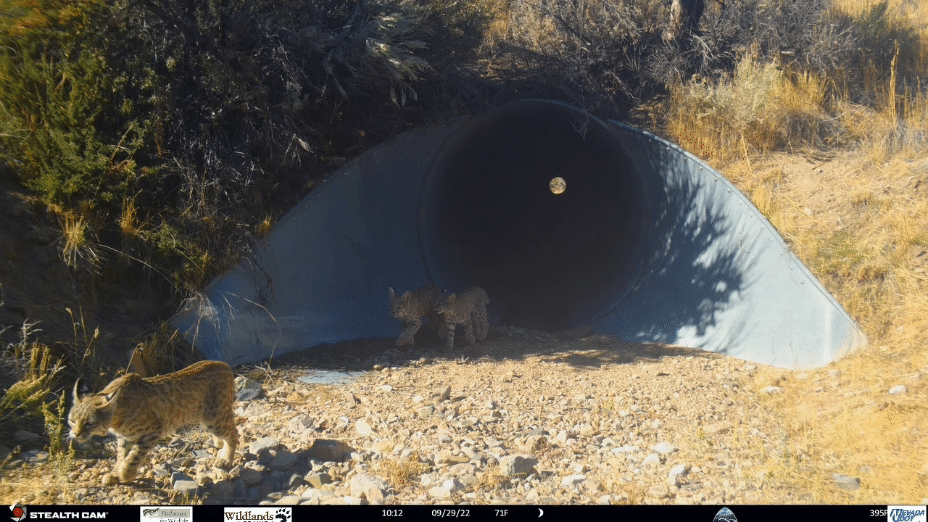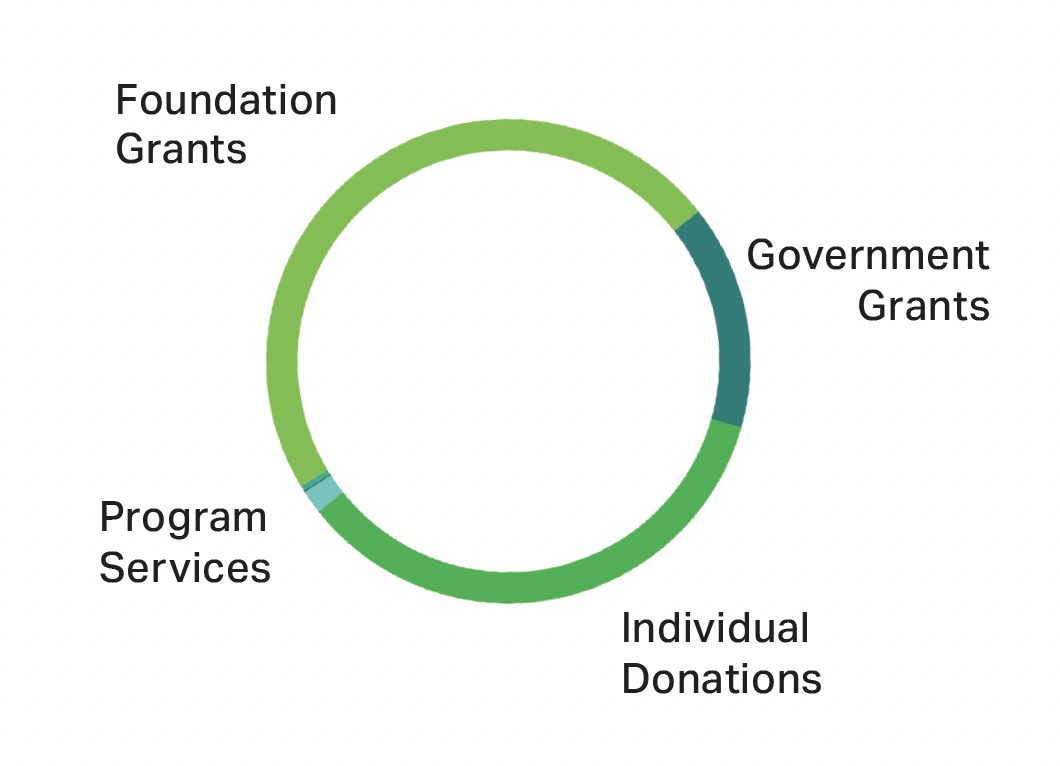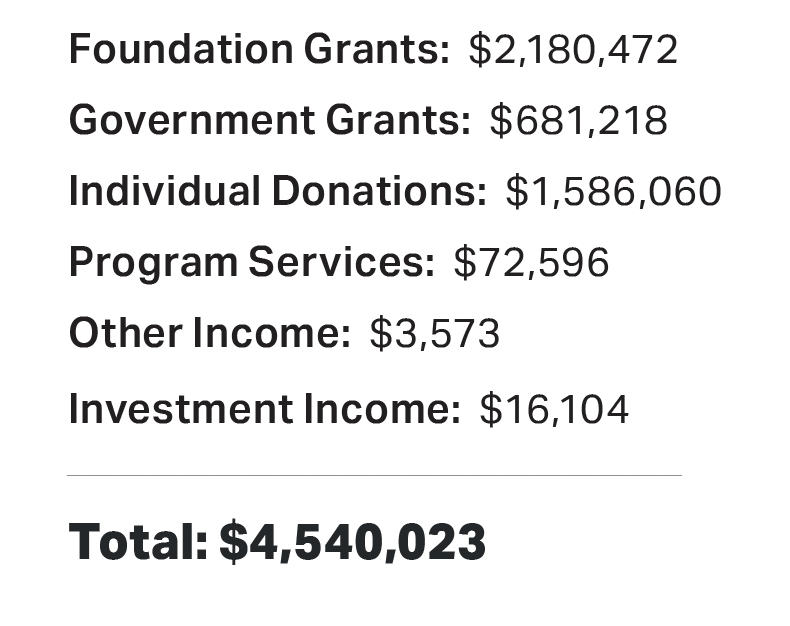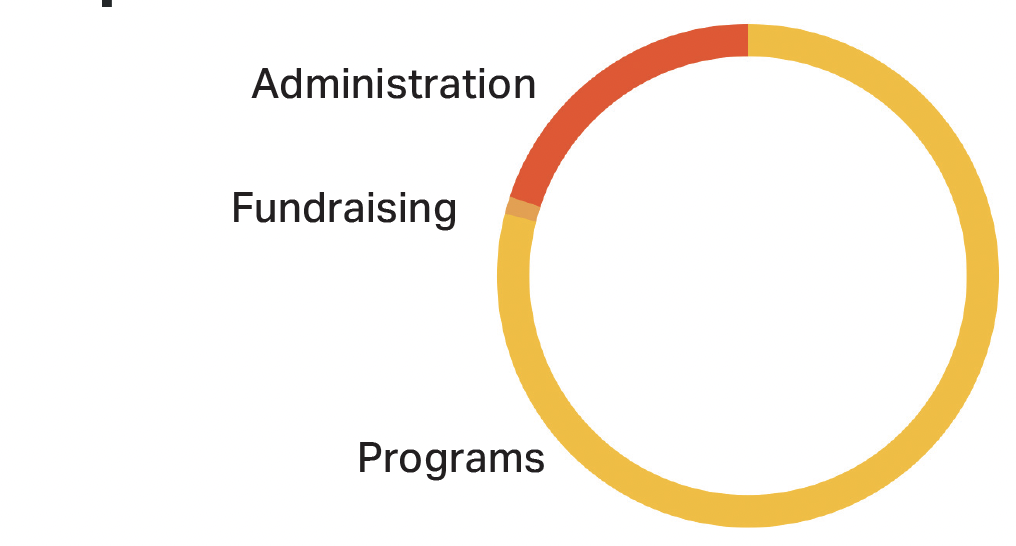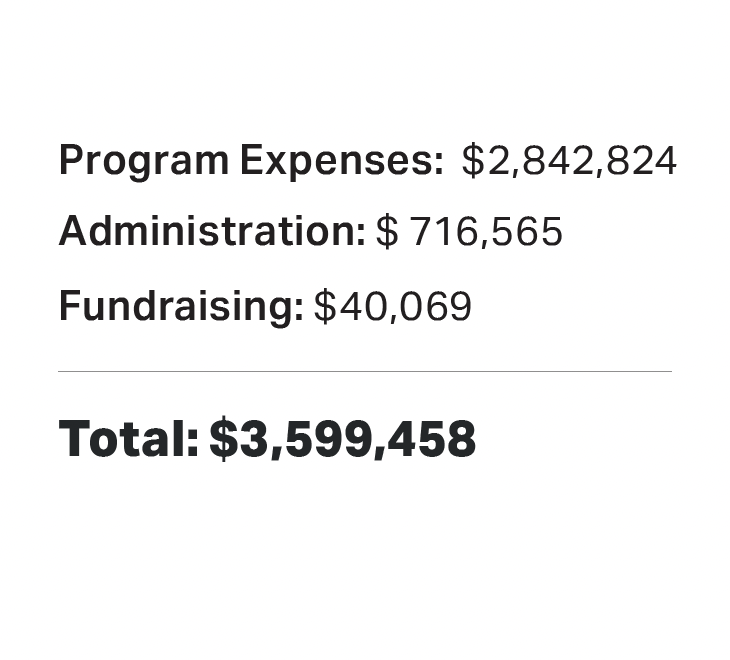On the path to rewildling North America
Dear Friend of the Wild,
With your support, Wildlands Network is leading communities across the continent forward toward a shared vision: a rewilded North America.
Support for rewilding is at all-time high across the globe. A movement that Wildlands Network helped launch over three decades ago can be credited for bringing back jaguars to Argentina, Tasmanian devils to Australia, and beavers to the UK.
Here in North America, we are charging forward with restoring habitat and movement pathways while reshaping government priorities to support land stewardship and species recovery. Within the next decade, because of your investment, we intend to capture jaguar kittens on camera reclaiming habitat in southern Arizona, see red wolves safely running across wildlife bridges as they expand their range along the East Coast, and document the first cougars roaming the Eastern Wildway as they return home to the lands of their ancestors.
This is our vision of rewilding North America.
This year’s report brings you stories of the challenges and opportunities that lie on the path toward that vision, and how Wildlands Network staff are rising to meet them.
As part of a global movement, we won’t be constrained by temporary setbacks. Rather, we will push forward to write the next chapter of conservation, together with allies like you across North America.
Thank you for joining us on this rewilding journey.
Executive Director
Katie Davis, JD
P.S. In 2026, we’ll be marking our 35th Anniversary.
I can’t wait to celebrate with you!
EXPLORE THE
WILDWAYS
Over the past 50 years, wildlife populations worldwide have shrunk by 73%. Here in North America, we are stopping extinction in its tracks.
Wildlands Network is a small but mighty team representing a continental community of change-makers like you. We are working not only to sustain North American biodiversity, but ultimately achieve a more ambitious goal: to rewild the continent and build a world where wildlife and humanity can thrive together.
To do so, our strategy focuses on implementing continental Wildways: interconnected networks of “highways for nature” that allow wildlife to move freely among wild spaces. By restoring and protecting these pathways, we can rewild entire ecosystems, promote biodiversity, and build resilience for future generations.
2030 Wildlife
Crossings Campaign
Every year, millions of animals die trying to cross our roads. Roads divide more than landscapes — they break down entire ecosystems. In fact, they’re one of the greatest threats to wildlife survival in North America.
This year, we launched a bold campaign to jumpstart 25 wildlife crossings and secure $1 billion in public funding by the end of the decade.
Wildlife crossings reduce wildlife- vehicle collisions by over 90%, reconnect crucial habitats, and restore once-degraded ecosystems. This is our path to rewilding North America.
You can get involved now by joining our crossings campaign here:
Our Most Ambitious Campaign to Date
$1 Billion
25 Crossings
By 2030
Policy Progress on Advancing Crossings
-
Over the last year, we’ve seen an incredible push at the state and federal level toward big, bold wildlife crossing projects across the U.S. and Mexico. This growing investment in crossings is helping make roads safer for drivers and wildlife by reducing these costly and dangerous collisions. At both the federal and state levels, Wildlands Network is leading the way to unlock public funding and identify key locations for building more wildlife crossings. Here are a few of the major wins over the past year.
-
In late 2024, the federal wildlife crossings grant program, which Wildlands Network helped create in 2021, awarded another $125 million to 15 states and one Tribe for wildlife crossing projects. In this latest grant round, Wildlands Network raised over $2.3 million dollars in private matching funds to help win the second-largest grant awarded, which will provide $25 million for four crossings to help endangered red wolves avoid deadly vehicle collisions on U.S. Highway 64.
-
New Mexico made history by dedicating $50 million – one of the largest state-level investments in the nation – to wildlife crossings. This bold action safeguards critical elk and pronghorn migration corridors in the Greater Cruces Basin. Wildlands Network played a pivotal role by leading the successful legislative campaign that secured this landmark funding for the Wildlife Corridors Fund.
-
We secured funding to support new jaguar corridors between Arizona, New Mexico, and Sonora, Mexico – including promoting the need for new wildlife crossings over Mexico’s Highway 2 to key decision makers.
-
After years of groundwork, Maryland passed the Wildlife Connectivity and Crossings Act to prioritize habitat connectivity in development projects and create a coalition to manage the process.
-
Our policy team on the ground helped secure $450,000 in state funding for wildlife crossing projects, using its analysis of wildlife collision hotspots to help determine crossing placement and design.
-
With the help of local partners, we helped California identify six new priority crossing sites along U.S. 395 in the Northern Sierra Nevada Mountains to help mule deer, bears, and other species safely cross this deadly road.
Making Wildlife Crossings a
Reality Across North America
1
Protecting Wildlands
Caring for What Matters in Mexico: Protected Areas
As part of the NOSSA coalition, in 2024, we coordinated a report revealing that Mexico’s budget for natural protected areas proposed for 2025 hit an 18-year low.
These Natural Protected Areas, or NPAs, are federally designated lands and waters managed to conserve biodiversity, protect critical habitats, and maintain ecosystem services. When appropriately funded, NPAs can be a highly effective conservation solution, protecting vital lands, waters and the species that live there.
These continued budget cuts put even Mexico’s most-protected land and species at risk. Without a budget for biodiversity conservation, protected areas are just lines on a map that tend to disappear.
The report garnered national and international attention with over 80 articles and headlines, placing this issue on the public agenda and in the spotlight for stakeholders and legislators. We continue to generate important public debates and draft recommendations to increase funding for protected areas in Mexico.
Read the full story
Download the Report
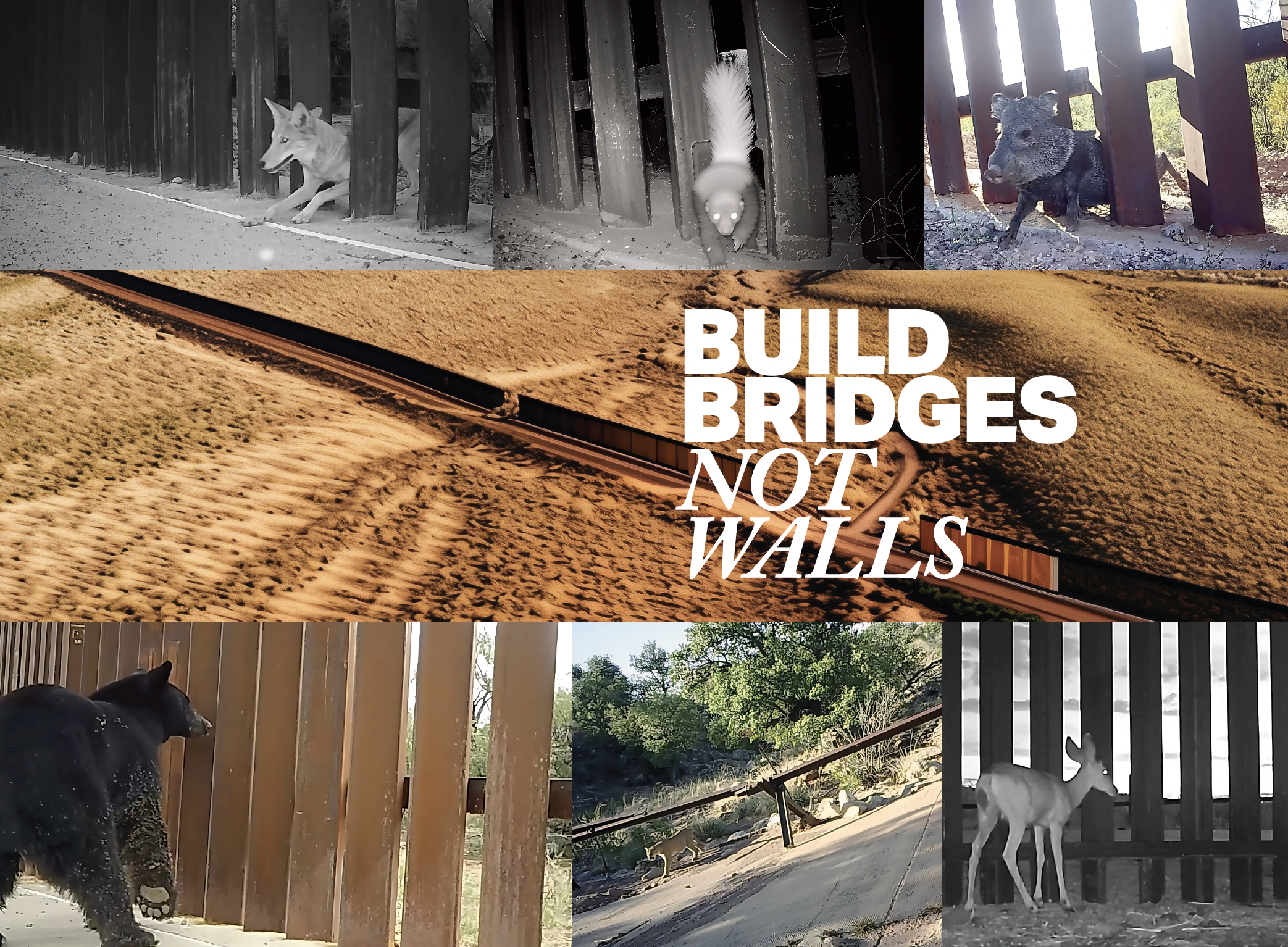
2
-
Like roads, fences fragment wildlife habitat across North America.
Wildlands Network is in the field documenting fences that impede the movement of wildlife – and then making sure those fences allow safe passage. One of our most critical projects is a fence so big that it has become a wall. In the last year, we published new research confirming a devastating truth: the U.S.-Mexico border wall is reducing wildlife movement by 86%.
The wall is cutting off ancient migration routes that wildlife in the borderlands use to find water, food, and mates. Using data from wildlife cameras along 100 miles of the border, we found that only 9% of animals encountering the wall made it across. For large mammals like black bears, deer, and wild turkeys, the crossing rate dropped to zero. However, we also found that small wildlife openings made a critical difference by making it 17 times more likely that a javelina or coyote could successfully cross. Now that we know these interventions work, we need more of them.
With this science in hand, we’re now focused on three key actions:
Stopping new wall construction in key wildlife corridors
Maintaining existing floodgates and openings to allow wildlife to cross the border
Installing small and large wildlife openings in any new construction
Our work was featured in “Nature Divided,” a documentary following our Borderlands Program Coordinator, Myles Traphagen, as he documents both the damage and the growing promise of reconnecting cross- border habitat.
WATCH
NATURE DIVIDED
Protecting Iconic Wildlife in North Carolina
3
From Crisis to Crossings
-
Red wolves are among the rarest animals on Earth, with fewer than 32 remaining in the wild. Once nearly wiped out by guns, they are now being driven closer to extinction by cars: six wolves have been struck and killed on U.S. 64 in the past three years. This busy highway cuts through the heart of their range in eastern North Carolina, making road collisions the leading threat to the survival of this iconic species.
After a wolf was killed on the highway in 2023, we started a rapid fundraising campaign that raised $4 million in private funds in 2024. We simultaneously began roadkill surveys, documenting over 5,000 animals – from wolves to bears to birds – all killed on the same road in just the first year.
Using this data and funding, we helped NCDOT secure a $25 million federal grant for building wildlife crossings under U.S. 64. Our road surveys will provide the fresh baseline data needed to evaluate the crossings once they are built, helping maximize the benefits for the species.
On a positive note, we’re pleased to share that no red wolf mortalities occurred along U.S. 64 during the past year while our survey study was underway. By removing roadkill on a daily basis, we may have made the highway less attractive for foraging wolves.
The U.S. 64 project earned us and our partners the 2025 International Conference on Ecology and Transportation Stewardship Award, marking a hopeful turning point for the red wolves and the many species that share their path.

4
Wildlife & Solar
Studying Wildlife Movement and the Impacts of Solar Development
-
As solar development expands across the West, we’re asking a key question: How can governments and companies develop renewable energy projects while protecting biodiversity and keeping wildlife connected?
To help answer that question, we’re leading novel research efforts to understand how wildlife interact with utility-scale solar projects.
After two years of GPS collar data on more than 70 pronghorn in New Mexico and Arizona, our early findings are providing valuable insights into relationships between pronghorn, solar development, and the specific habitat variables that dictate pronghorn habitat use around solar facilities.
As our research continues, we’ll use these findings to inform future monitoring protocols and design standards for solar projects across the West.
5
Fixing Fences
-
Every year in southern Utah, 5,000 mule deer migrate through a desert crisscrossed by dangerous barbed wire. With help from 60+ volunteers, we’ve surveyed 150 miles of winter range fencing in Grand Staircase-Escalante National Monument and identified 12.4 miles of fences in need of repair to improve permeability for migrating deer.
We completed those modifications this past fall and are now using remote cameras to document mule deer response to the improved fences in order to quantify their positive impact. This is a key step toward our 2030 goal of improving wildlife movement along 1,000+ miles of public land fencing.
6
Jaguars on the Move
-
From the highlands of Sonora to the borderlands of Arizona, an inspiring conservation effort is taking shape – one that could help jaguars reclaim their home in the U.S.
Once roaming from Argentina to Arizona, human development and persecution pushed jaguars out of the U.S. Today, their return is threatened not only by roads and habitat loss, but by the looming expansion of the U.S.-Mexico border wall. That’s why we have focused on protecting habitat corridors that connect breeding areas both within Sonora and into the species’ historic range in the U.S. Southwest through a jaguar corridor, all while working toward wildlife crossings at the border wall.
Over the last two and a half decades, efforts to protect jaguars in Sonora have increased significantly, with more protected surface and outreach efforts than ever before. Researchers at the University of Arizona confirmed five jaguar sightings in Arizona this summer alone. Our camera traps also captured what appears to be a female jaguar near Sonora’s capital, Hermosillo, closer to the city than ever recorded.
This progress is an incredible step toward rewilding jaguars in the borderlands, but their populations are still fragile and threatened. With 95% of Mexico’s land held privately or communally, we are forging deep partnerships with local landowners to continue restoring connectivity. In 2024, Sonora passed a landmark law creating legal and economic incentives for voluntary land protection, including a new conservation mechanism akin to easements known as the Real Right of Conservation.
Shortly afterward, we received a grant to support our work with landowners and reap the benefits of this new policy. We are now working with ranchers in regions like Sahuaripa and Bacoachi to protect 4,450 acres under voluntary conservation within the jaguar corridor.
We’re also tackling one of the greatest modern threats to jaguar movement: highways. The new grant will also allow us to advocate for Sonora’s first wildlife overpass spanning a dangerous stretch of Highway 2, where vehicle collisions threaten not just jaguars, but many species.
This growing corridor, built ranch by ranch, crossing by crossing, border by border, offers a blueprint for binational conservation.
Together, with local communities, researchers, and policymakers, we’re ensuring jaguars have a way forward – across borders, beyond barriers, and into a wilder future.
Connecting Wildways in Mexico
As a critical part of landscape connectivity, we’re incorporating wildlife movement into large- scale planning and development – not just as an afterthought, but as a foundation.
California’s Landmark Connectivity Bill
In late 2024, California enacted the Room to Roam Act, requiring cities and counties to incorporate wildlife connectivity in their long- term planning. Wildlands Network was a driving force in drafting and championing the bill’s passage.
This groundbreaking law combats the cumulative impact of numerous project-level decisions that fragment habitats – the “death by a thousand cuts” that drives species decline.
By embedding connectivity into local land-use planning – where the most consequential decisions for wildlife and landscapes are made – city and county planning will reflect the bigger picture, advancing our Pacific Wildway vision. This groundbreaking policy is a major win for species such as mountain lions, tule elk, desert bighorn sheep, and more.
7
Emerging Projects
The Future of Rewilding
2024 FINANCES &
FISCAL SPONSORSHIPS
Since 2020, we have built strong momentum, with revenue growing by 93% during that time. This growth positions us to deepen our impact in 2025 across research, policy, and rewilding initiatives.
In fiscal year 2024, we raised $4,540,023 from our deeply committed supporters and closed the year with expenses totaling $3,599,458.
Over the past few years, we have collaborated closely with the Department of Energy on solar and wildlife research. However, due to recent shifts in federal priorities, funding for this project remains uncertain for 2026. As we navigate this period of uncertainty, we are deeply grateful for your continued generosity. Your support has enabled us to achieve major milestones on our path to connect, restore, and rewild North America.
REVENUE
EXPENSES
Our Current Fiscal Sponsorships
Safe Passage Fund Coalition is a collaboration of six organizations that raise private funding for wildlife-vehicle collision mitigation in the Pigeon River Gorge in the southern Appalachians.
Photos:
1. Aerial flyover above snow-covered mountains. ©Adobe/Stockmedia
2. Wildlife crossing built over a six-lane highway in Europe. ©Maarten Zeehandelaar
3. Jaguar walking cautiously in Mexico. © Alejandro Prieto
4. Natural Protected Area in Mexico. © Carlos Aguilera
5. Photo collection of wildlife trying to cross the Mexico/US border wall. ©Sky Island Alliance / Wildlands Network
5. Red wolf pups in North Carolina. ©Ron Sutherland
6. Pronghorn standing in front of a solar farm in New Mexico. ©Kevin Smith
7. Jaguar approaching water trough in Sonora. ©Wildlands Network
8. A family of bobcats passing under I-395 in California. ©Pathways for Wildlife











